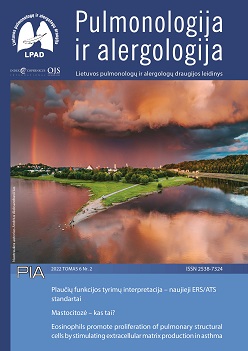CONTACT ALLERGY TO PLANT ALLERGENS: A SIX-YEAR ANALYSIS OF EUROPEAN BASELINE SERIES ALLERGENS
Abstract
Introduction. Plants and plant products play a vital role in our daily life and are becoming increasingly popular in the modern world. However, plant-based products can induce allergic contact dermatitis – a clinical manifestation of contact allergy. Skin patch testing should be done since allergic contact dermatitis is characterized by unspecific skin rashes. Aim of the study. To assess contact allergy to European Baseline series allergens frequency changes from 2015 to 2020 and determine demographic and clinical characteristics of the individuals. Methods. This study included 1 970 patients with contact dermatitis who had been path tested with European Baseline Series allergens. Results. The incidence of at least one positive reaction to the baseline series was 55.22 %. Plant-induced allergic contact dermatitis was the most prevalent in 2018 (14.21 %). Sensitization to balsam of Peru was found in 7.05 %, sensitization to colophony – 4.56 %, and sensitization to sesquiterpene lactone mix – 0.81% of patients examined for suspected allergic contact dermatitis. In 84.89 % of women, plant allergen sensitization was confirmed. Contact allergy to plant allergens was confirmed in 33.06 % of patients with other allergic diseases. In the age group of 30–39 years old, sensitization to plant allergens was most frequently noted (27.02 %). Dermatitis of the face was seen in 40.81 %, dermatitis of the hands in 25.30 %, and dermatitis of the legs in 6.12 % of contact allergy to plant allergens cases. Conclusions. Women and atopic patients with atopic history are more likely to develop contact allergy to plants. The incidence of contact allergy to colophony decreased statistically significantly in the elderly groups. Allergic contact dermatitis was mostly causing face skin rashes. The incidence of at least one positive reaction to the baseline series was 55.22 %, to the plant allergens – 11.55 %, but findings were statistically insignificant.


